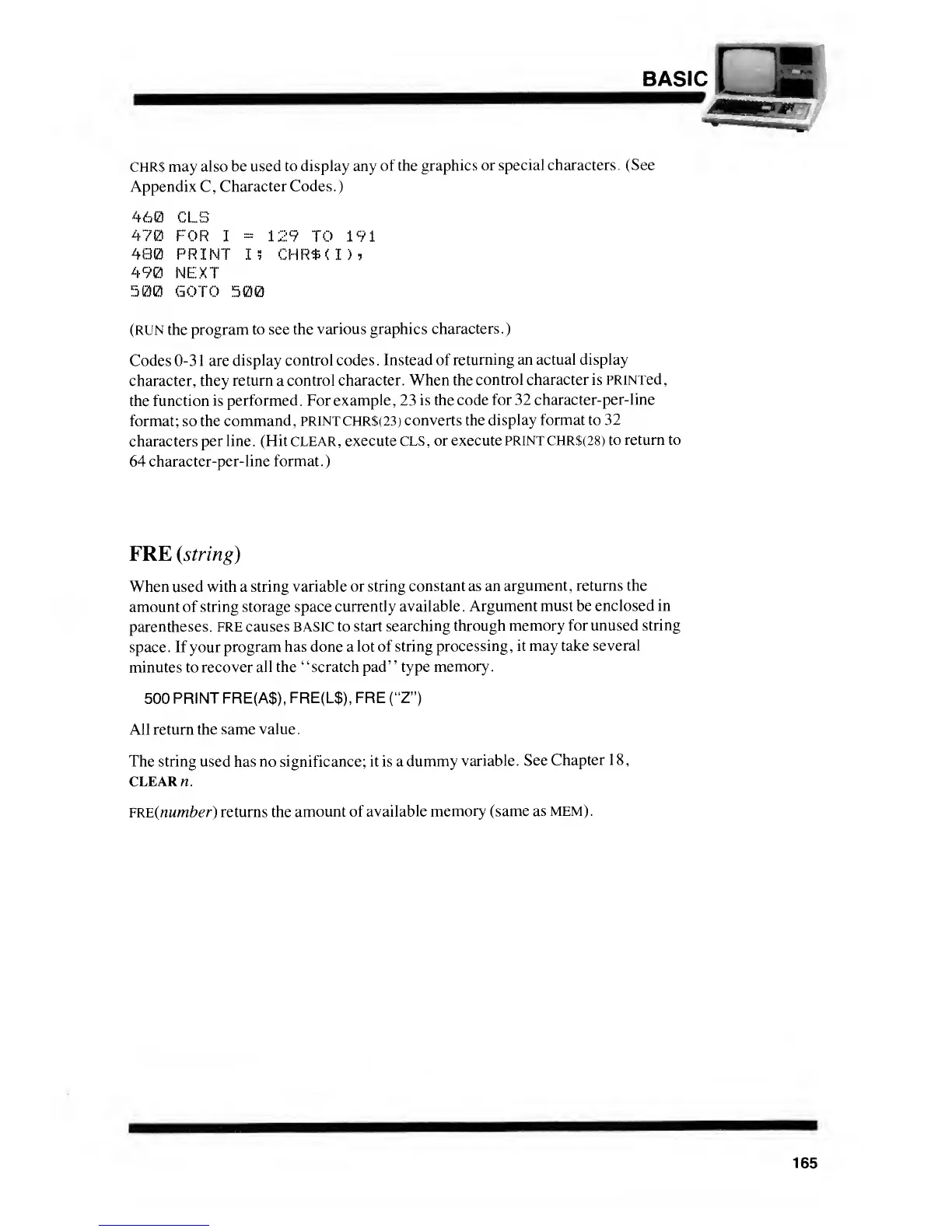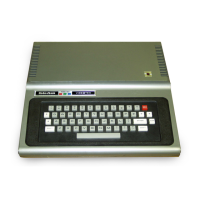BASIC
CHR$ may also be used
to display any
of the
graphics or special
characters. (See
Appendix
C,
Character Codes
.
)
460
CLS
470
FOR I
=
129
TO 191
480
PRINT I;
CHR*U>>
490
NEXT
500
GOTO 500
(RUN the program
to see the
various graphics
characters.)
Codes
0-3
1 are
display control codes
. Instead of
returning an actual display
character,
they return
a
control
character. When the
control character is
PRINTed,
the function
is performed. For example,
23 is the code
for 32
character-per-line
format; so the
command, PRINT CHR$(23)
converts the
display format to 32
characters
per line. (Hit CLEAR, execute
CLS, or execute
PRINT CHR$(28)
to return to
64
character-per-line format.)
FRE (string)
When used with a
string variable or string
constant as an
argument, returns the
amount of string storage space
currently
available
.
Argument
must
be
enclosed in
parentheses. FRE causes BASIC
to start searching
through memory
for unused
string
space . If your
program has done a
lot
of
string
processing
,
it may take
several
minutes to recover
all the "scratchpad" type
memory.
500
PRINT FRE(A$),
FRE(L$), FRE ("Z")
All
return the
same value.
The string used has no significance; it is a dummy
variable
.
See
Chapter
1
8
,
CLEAR n.
FRE(number) returns the
amount of
available memory (same
as MEM).
165

